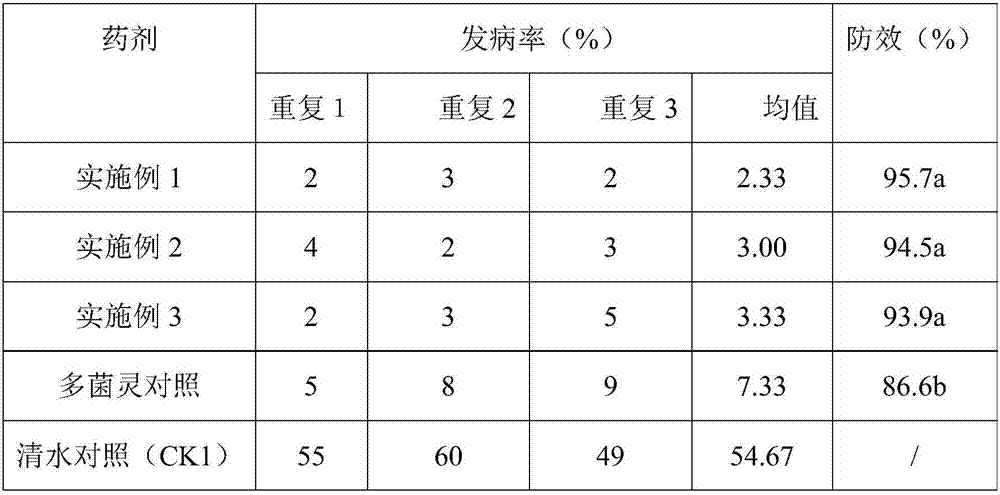Compound bio-preservative for taro storage and preparation method thereof
A technology of biological antiseptic and fresh-keeping agent, which is applied in the direction of antimicrobial preservation of food ingredients, protection of fruits/vegetables with coating protection layer, and application. It can solve problems such as single antibacterial spectrum, high application standards, and harm to human health. Achieve broad-spectrum antibacterial and disease prevention effects, simple preparation process, and no pesticide residues
- Summary
- Abstract
- Description
- Claims
- Application Information
AI Technical Summary
Problems solved by technology
Method used
Image
Examples
Embodiment 1
[0017] A compound type biological preservative and preservative for taro storage, which is composed of a biomass coating agent and a Chinese herbal medicine preservative, wherein the weight ratio of the biomass coating and Chinese herbal medicine preservative is 1:30, and the The raw materials by weight of the biomass coating and spreading agent include: 7 parts of alginate and 3 parts of chitosan; the raw materials of the Chinese herbal medicine preservative by weight include: 30 parts of astragalus, 30 parts of rhubarb, 15 parts of gallnut, 15 parts of wedonia chrysanthemum 10 servings of star anise.
[0018] The method for using the compounded biological preservative preservative for taro storage is as follows:
[0019] (1) After mixing the biomass coating and spreading agent according to the above ratio, add it to 30 parts of warm water at 35°C and stir evenly to form component A liquid;
[0020] (2) After mixing the Chinese herbal medicine preservatives in proportion, ad...
Embodiment 2
[0024] The compounded biological preservative and preservative for taro storage is composed of a biomass coating agent and a Chinese herbal medicine preservative, and the weight ratio of the biomass coating and Chinese herbal medicine preservative is 1:45. The raw materials of the biomass coating and spreading agent include: 8 parts of alginate and 2 parts of chitosan; the raw materials of the Chinese herbal medicine preservative include: 70 parts of astragalus, 15 parts of rhubarb, 5 parts of gallnut, 5 parts of weed servings, 5 servings of star anise.
[0025] The method for using the compounded biological preservative preservative for taro storage is as follows:
[0026] (1) After mixing the biomass coating and spreading agent according to the above ratio, add it to 40 parts of warm water at 40°C and stir evenly to form component A liquid;
[0027] (2) After mixing the Chinese herbal medicine preservatives in proportion, add 100 parts of water and boil for 30min, then cool...
Embodiment 3
[0031] A compound type biological preservative and preservative for taro storage, which is composed of a biomass coating agent and a Chinese herbal medicine preservative, wherein the weight ratio of the biomass coating and Chinese herbal medicine preservative is 1:60, and the The raw materials by weight of the biomass coating and spreading agent include: 7 parts of alginate and 3 parts of chitosan; the raw materials of the Chinese herbal medicine preservative by weight include: 40 parts of astragalus, 25 parts of rhubarb, 15 parts of gallnut, 10 parts of wedonia chrysanthemum 10 servings of star anise.
[0032] The method for using the compounded biological preservative preservative for taro storage is as follows:
[0033] (1) After mixing the biomass coating and spreading agent according to the above ratio, add it to 50 parts of warm water at 45°C and stir evenly to form component A liquid;
[0034] (2) After mixing the Chinese herbal medicine preservatives in proportion, ad...
PUM
 Login to View More
Login to View More Abstract
Description
Claims
Application Information
 Login to View More
Login to View More - R&D
- Intellectual Property
- Life Sciences
- Materials
- Tech Scout
- Unparalleled Data Quality
- Higher Quality Content
- 60% Fewer Hallucinations
Browse by: Latest US Patents, China's latest patents, Technical Efficacy Thesaurus, Application Domain, Technology Topic, Popular Technical Reports.
© 2025 PatSnap. All rights reserved.Legal|Privacy policy|Modern Slavery Act Transparency Statement|Sitemap|About US| Contact US: help@patsnap.com

